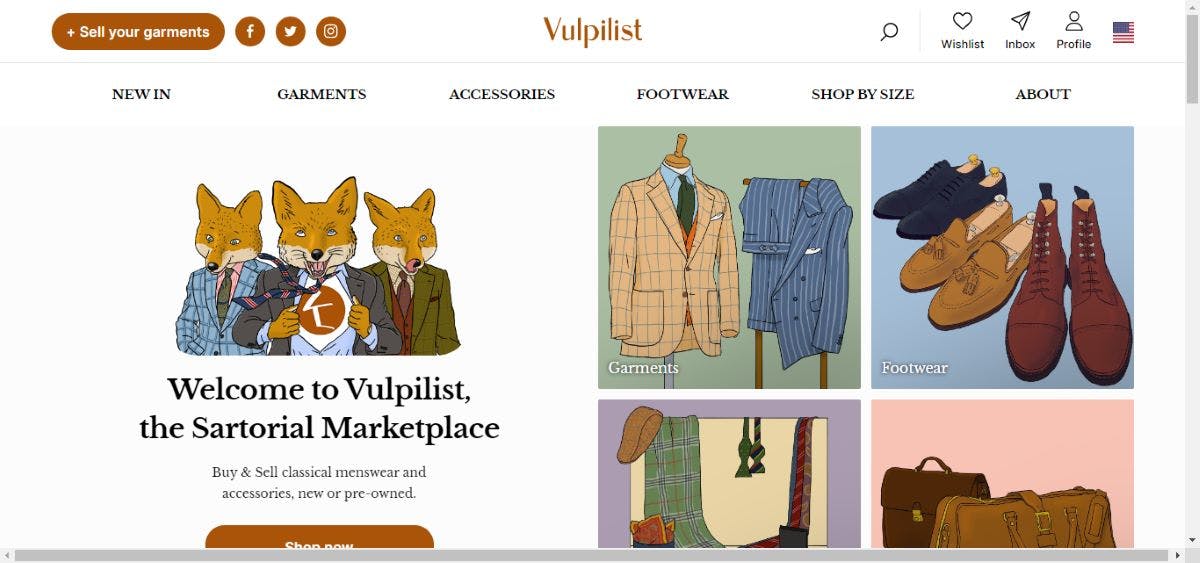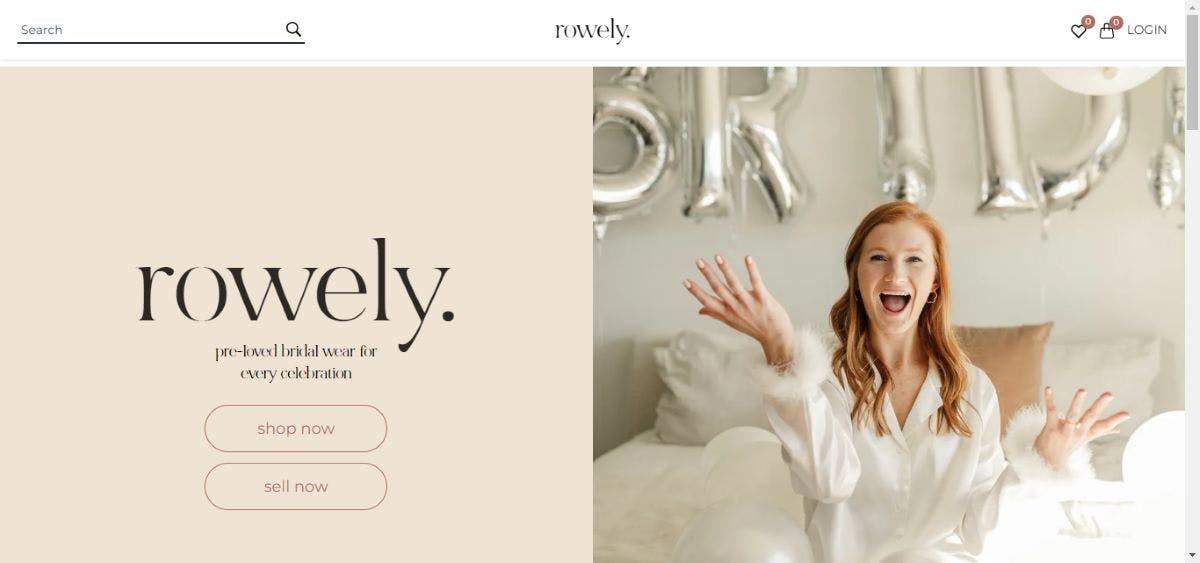How to build a website like OfferUp
OfferUp makes it easy for both buyers and sellers who are near each other to exchange goods online. Find out what goes into building a website like OfferUp here.
OfferUp was founded in 2011 by Arean Van Veelen and Nick Huzar to rival Craigslist as well as revolutionize the way items were sold online. The idea for this USA-exclusive company struck Nick when his wife was expecting a baby. The method at that time for getting items online didn’t satisfy him, and just wouldn’t work to make room for their newest family member.
Over a decade later OfferUp is completing milestones like reaching $1 billion valuation and challenging industry giants to become one of the top buy and sell marketplaces in the United States.
Online marketplaces show us what’s possible for the growth of the marketplace model. Sites like OfferUp, Airbnb, Etsy, and Fiverr have shown aspiring entrepreneurs that they can scale to millions of users too, and this has inspired a lot of founders to consider starting a marketplace themselves. This is making the collaborative economy expand at an amazing, quick rate.
It’s no surprise the industry’s market size is expected to reach $335 billion by 2025.
The success of the marketplace model is mainly made possible by its efficiency. Since marketplace founders don’t need you to own the inventory they’re selling, it is easier to start a business like OfferUp with low initial costs and risk. But remember that building a marketplace is patient work. You’ll need an airtight strategy, an understanding of what users—both the buyers and sellers—need, and a readiness to learn and iterate as you go.
OfferUp’s success can be attributed to a key factor in how popular the platform is for buyers and sellers. Its user-friendly, intuitive design allows users to post items easily, find and buy what they’re looking for, and message each other in real time. OfferUp has also taken steps to make users feel safe by focusing on the security of the platform—which is something buyers and sellers get very wary about when shopping online. What’s more, you can find just what you’re looking for and customize your experiences on OfferUp by using their item recommendations and price alerts.
This guide will help get you started on your marketplace creation journey. We’ll look at how you can learn from the convenience, flexibility, and safety of OfferUp to build your go-to marketplace for buyers and sellers.
OfferUp is an online marketplace that connects buyers and sellers within the local community to make peer-to-peer transactions possible.
Sites like OfferUp operate straightforwardly: customers first need to register by filling out their basic information, then search for the goods they want. On the sellers’ side; their items are listed with a suitable description and price, and they will also be required to take pictures of the products in question.
Once the buyer finds the item they need, they can then pay the quoted price or make an offer that the seller may accept, reject, or counter. The buyer and seller can even start a chat on the platform to negotiate, arrange meet-ups, and buy the goods.
OfferUp provides a secure way to exchange funds, and payments are made directly between parties. Another great feature is rating, which allows buyers and sellers to rate each other so you can filter who you buy from or sell to.
OfferUp is a consumer-to-consumer marketplace that focuses on buying and selling items locally between individual buyers, sellers, and small businesses.
Even though OfferUp does not charge for listing items on the platform, it still finds ways to remain profitable. One of those ways is taking a small cut out of the sales price on every transaction. This strategy is called commission, and it’s by far the most common marketplace business model. On OfferUp, this fee will either be $1.99 or 12.9% of the selling price.
OfferUp also makes money through a Verified Dealer Program for car dealerships, allowing them to sell their cars on the platform.
OfferUp will also make money from shipping fees if users decide to handle shipping their items through the marketplace. It also offers optional ‘Bumps’ for sellers to promote their listings and allows display ads to make money from advertisers.
- eBay: eBay is a successful consumer-to-consumer marketplace that allows anyone to buy and sell items like clothes, electronics, cars, and more. The platform features a lot of diverse products and brands and offers a shipping option to users.
- Craigslist: This is a classifieds adverts website that provides local classifieds and forums for just about anything. From housing to events, services, and jobs—Craigslist is one of the oldest marketplaces.
- LetGo: This marketplace is optimized for smartphones to handle the buying and selling of used items. It offers a cheap alternative to pre-loved goods, and users can buy or sell just about everything.
- Facebook Marketplace: This is an e-commerce platform, developed by Meta, that lets users trade their new and used goods either locally or from businesses, right on Facebook.
- Kijiji: Kijiji is another classifieds advertisement platform that lets users sell or buy almost anything. Users can trade cars, jobs, and even vacation rentals.
- VarageSale: This app is similar to OfferUp in that it lets you offer goods or buy them locally. Users can exchange new or used items.
- 5miles: 5miles’ users can buy and sell goods and services like electronics, furniture, and home cleaning within 5 miles of them.
- Gumtree: Gumtree is a British-based online classifieds platform originally launched for free classified ads in the UK. They have expanded to several countries ever since and offer buying and selling services for items, properties, or to find a job.
- Chairish: This marketplace caters to design lovers, who want to shop for classic and contemporary art, decor, and furniture.
Creating a functional alternative to OfferUp will require you to stand out and differentiate yourself in the market by doing the following:
- Validate your marketplace idea: It is easy for an entrepreneur to fall in love with your ideas and build apps that generate zero traffic or traction. This is what not validating your marketplace idea causes. You want to validate your assumptions before you start building your platform. Once you have your assumptions listed, talked to your users and study the search data to understand if your idea has wings.
- Build your Minimum Viable Platform: Now that you know what your users need, it’s time to work out your minimum viable platform. Your minimum viable platform will have only one function; to solve your target audience’s core problems in ways no other platform can. So, you don’t need to offer all the features OfferUp does – just the ones that let you establish a viable alternative to OfferUp. Early adopters will help here with testing your MVP, and their feedback will be invaluable to improving your marketplace. So you can learn and consistently make small improvements as you go, basing those improvements on user input. And finally, ask them after retesting if there are any new issues.
- Build a userbase: After you’re sure your MVP works you can start growing your userbase. One way to achieve this is by focusing on one side of the marketplace dynamic: selling. Boost the marketplace supply side first and then run campaigns to get buyers for those sellers.
- Find the right growth strategies: The marketplace model takes more time to grow than any other online business. Staying patient and focusing on consistency instead of speed will help you select a marketplace growth strategy that will actually make you scale your marketplace in the long run. Growth strategies include viral marketing, content marketing, search engine optimization, and many more. You want to be able to test out different growth ideas before sticking to one.
- Learn and iterate as you grow: After building your user base through the right growth channels, you’ll notice your MVP start to grow as you cater to a wider audience. It’s best to launch with the bare minimum features of your MVP. But now that your marketplace is growing, you need powerful features to differentiate your offering and provide value. You can do this by tracking users’ behavior, conducting interviews, and trying to understand what functionality will be most useful to your base. By committing to constantly learning and improving what you’ve built, you can keep providing value to your niche.
When it comes to building out your OfferUp-style website, there is a range of options to consider.
You can:
- Build a marketplace from scratch: Building your marketplace from scratch is a huge undertaking and would need you to carefully consider the pros and cons. It involves understanding how to design and code all the essential parts of your marketplace, including data architecture, transaction processes, and the full UIs for users and admins. This will allow you to create a website that completely suits your marketplace, but it may end up costing too much money and time to launch that you might not have.
- Build a marketplace with WordPress: WordPress allows you to use marketplace plugins to build your platform. Building with WordPress is an easy and affordable way to get full access to an entire codebase and a large selection of themes to get a basic marketplace up and running. However, it’s important to note that the plugin approach requires more research and experience for proper installation and maintenance. Custom-building an integration you need is also very demanding.
- Build a marketplace on top of open source software: Some marketplace software solutions allow you to host them on your server. You only need to download it as open-source and then modify it for your product. This method is cheaper and faster than building from scratch since you’re saving time by downloading the open-source software. However, the developer experience to build, develop, and maintain your platform may be quite poor and the cost exceed what you expect..
- Build with a combination of no-code tools: Using a combination of different no-code tools to build your marketplace has several benefits.. These no-code tools give you great customization abilities for functions and layout. But it will take a longer time to launch as the learning curve is a lot steeper.
- Build with a dedicated no-code marketplace SaaS tool: Using software-as-a-service no-code tools that also include hosting is the fastest way to get your product ready for launch. This method lets you validate your idea and refine your MVP in no time. The downside to having a SaaS tool doing all the heavy lifting for you is that there will be a limit to how much you can customize your platform. So you may have to launch without all the features you wanted to implement. Choosing the right marketplace software tool that works for you will make all the difference here.
- Develop a marketplace on top of an API-based marketplace SaaS tool: API-based marketplace tools handle the essentials for building your marketplace. This gives you complete freedom to develop the marketplace features that are perfect for you without worrying about the basics. While you can rest assured the payment and basic marketplace functions are taken care of, this method still requires considerable technical skills. Luckily, using an API-based marketplace tool like Sharetribe will also mean you have access to their developer partners from all around the world, to help you build the custom platform you want.
Your perfect marketplace development approach is driven by the features your OfferUp-style marketplace needs, the amount of time and money you can spend on building/developing, and your team’s technical skills. But, in most cases, you want to choose the option that lets you launch fast and learn from real users as you go.
Here at Sharetribe, we’ve developed a marketplace solution with just that in mind.
Sharetribe is designed to launch a marketplace like OfferUp fast. You can jumpstart your learning process without knowing code and still develop custom functionality on top of your Sharetribe marketplace.
This makes it possible to develop your business further and use customized solutions for your special requirements. Whether you’re integrating a third-party service or building a mobile app Sharetribe lets you extend your marketplace with no limits.
Sharetribe’s goal is to help founders make marketplaces that meet their needs for unique offerings and can be just like OfferUp if needed.
Whether you’re buying baby feeding equipment, a crib, clothes, or toys, having a baby isn’t cheap. The Octopus Club is a peer-to-peer platform that lets you buy and sell gently-used and affordable baby products.

Vulpilist’s motto since 2020 is “the return of the classic man”. Buyers and sellers can trade pre-owned or new fashion items on this Sharetribe-powered marketplace—with focus being placed on classical men’s fashion and accessories.

Rowely is a marketplace for pre-loved bridal wear for every celebration. Seeing how hard it is to get affordable high-quality wedding essentials for the big day, Rowely decided to partner with Sharetribe to give users a platform where they can find stunning wedding pieces for reasonable prices.

Check out this Complete guide to building online marketplaces if you want to get a thorough understanding of all the steps to building a marketplace. You will find tons of expert advice that you can start applying as a marketplace entrepreneur, no matter how you decide to build your website.
Here’s to wishing you all the best with your marketplace!
Start your 14-day free trial
Create a marketplace today!
- Launch quickly, without coding
- Extend infinitely
- Scale to any size
No credit card required
